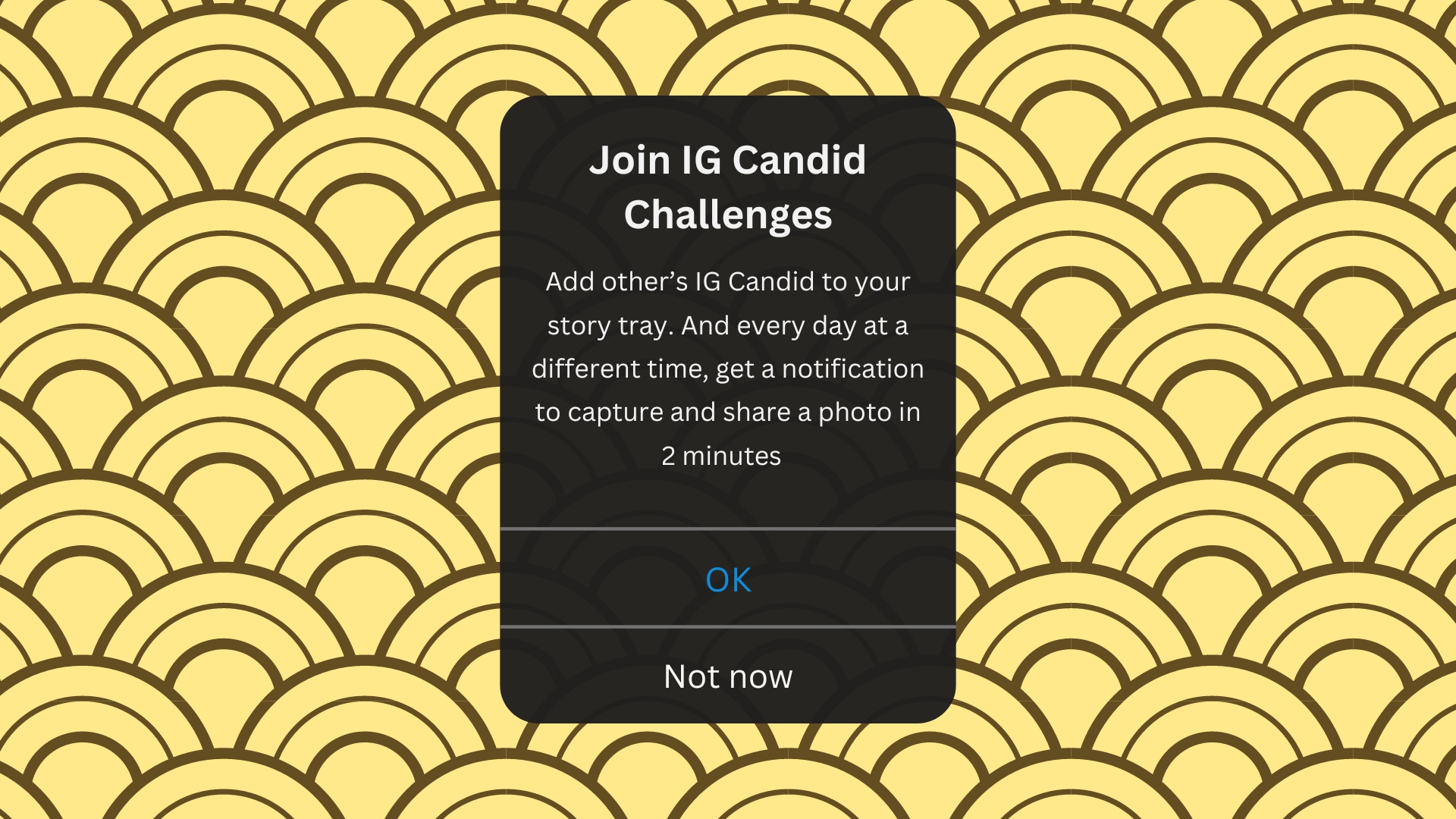It’s back to the regular digital marketing news in this week’s roundup after last week’s special content plan focussed article!
This week, is Instagram too fake to take on BeReal? Twitter help improve the mindset of social media managers with a new reply filter, and Google being Google, continue to improve its tools for users whilst sunsetting other features.
Instagram Tests BeReal Competitor Candid Challenges
Instagram has begun to test a new photo-centric feature called Candid Challenges, which overlaps with the features of the growing app BeReal.
Allesandro Paluzzi, an app researcher, discovered Candid Challenges, which will encourage users to share a different selfie every day at a random time.
Candid Challenges uses a user’s front and back camera to simultaneously take a photo on both.
Being Real About BeReal
BeReal is also built around candid photos simultaneously using the front and back camera.
The premise is for users to create an original or genuine snapshot of what they’re doing and where they are, hence the name ‘BeReal’.
BeReal was first launched in 2019 and hit the top spot in Apple’s App Store in July 2019, it has been downloaded over 28 million times.
The app currently has around 21.6 million monthly active users, and around 2.93 million use the app daily, which is an impressive feat.
Given the app’s popularity, it’s no wonder other social media platforms want to jump on the trend.
It’s currently unknown how far along Candid Challenges is into development as it’s currently only an internal prototype, which means that only internal employees can access the feature.
Twitter Allows Users To Filter Unwanted Replies
Users of Twitter will soon be able to filter out unwanted, harmful, or offensive replies with an automatic reply filter.
Jane Manchun Wong, an app researcher, discovered the feature and shared a screenshot on Twitter about the tool.
Twitter declares that the automatic reply filter will enact the following:
“Replies to your tweets that contain potentially harmful or offensive language will be filtered and appear here. Others can still see these replies.
Keep in mind we use technology to help us identify such replies, so while we’re always improving, we may not get it right all the time.”
The tool is located under the privacy and safety settings on your account and can be toggled on or off.
It’s important to note that the filter cannot be customised in any way shape or form, it’s either on or it’s not.
Twitter admit in the filter description that its tool isn’t 100% accurate, so it may filter out replies that aren’t harmful.
Filtering Isn’t Censoring
One important takeaway from this feature is that filtered replies aren’t censored, The replies will be visible to other users on Twitter, but they’re just filtered out of the responses that will appear in the notification stream.
It’s unlikely anyone else will really know when unwanted replies get filtered from a thread by the original owner.
The intent behind this new filter is to reduce the negative strain on mental health that social media or community managers can get by looking at negative replies to tweets all day.
You can always turn replies off completely, but that sort of defeats the purpose of social media.
It’s currently unknown when this feature will be available to users.
New Google Updates For Search Console and Ads
Google has released updates for two of the most useful tools for marketers and advertisers, Google Search Console and Google Ads.
More In-Depth Data For Google Search Console
Google Search Console (GSC) will now start reporting on the Core Web Vital (CWV) score of specific URLs and aggregate scores for URL groups. So now there will be even more granular data for marketers and businesses to use.
The updated CWV section on Search Console will let users see which URLs are holding the website back from “good” scores.
Now you’ll be able to know where to focus if your scores aren’t as good as they could be.
So What’s New?
Previously, GSC’s Core Web Vitals report only showed aggregate scores based on URL groups.
URL groups will still get these scores, but now you can go a level deeper and get specific URL scores.
By clicking on a URL in the report, you will see the more specific URL data on the right-hand side.
This will aid users who are investigating which CLS scores belonging to specific URLs need improving.
Google Ads Launches New Tool For Performance Max Campaigns
Google Ads is now rolling out a tool to help advertisers upgrade their eligible smart shopping campaigns to performance max campaigns.
Earlier this year, Google announced that they will be ‘sunsetting’ smart shopping and local campaigns, due to the fact that a performance max campaign offers the same features.
Google will be automatically upgrading campaigns at the end of September to performance max ones if they’re not already, but now you’ll be able to upgrade your campaigns earlier than that using the self-upgrade tool.
Here’s all you need to know about it.
The Performance Max Self-Upgrade Tool
The self-upgrade tool can be found for smart shopping or local campaigns under the ‘recommendations’ page, or by finding and clicking the notification about it.
Upgrading is very simple, all it takes is a click, you’ll just need to click “Apply all” to the recommendations.
Historical campaign performance from previous local campaigns or smart shopping campaigns will convert over to the new performance max campaign, and so will all your campaign settings.
Google has aimed to make the upgrading process as easy as possible.
The tool is currently being rolled out now and through the beginning of September, if you choose not to upgrade, Google will do it for you. However, they’ll notify you before the campaign is upgraded.





